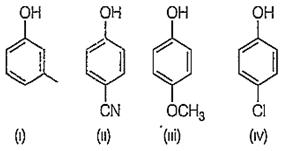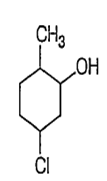 Multiple Choice Questions
Multiple Choice QuestionsQuantitative measurement of nitrogen in an organic compound is done by the method :
Berthelot method
Belstein method
Lassaigne test
Kjheldahl method
Brown ring in the test of NO is formed due to the formation of :
FeSO4.NO
[Fe(SO4)2.NO]H2O
Fe2(SO4)3.NO
None of these
Which kind of fission is favoured by sunlight ?
Heterolytic fission
Homolytic fission
Both (a) and (b)
None of these
In the titration of Na2CO3 and HCl, the indicator used is
methyl orange
methylene blue
phenolphthalein
litmus
Which type of isomerism is shown by propanal and propanone?
Functional group
Metamerism
Tautomerism
Chain isomerism
Copper sulphate is dissolved in water containing ________ for making Bordeaux mixture.
NaOH
KCN
Ca(OH)2
All of these
The temporary effect in which there is complete transfer of a shared pair of pi-electrons to one of the atoms joined by a multiple bond on the demand of an attacking reagent is called
electromeric effect
inductive effect
positive resonance effect
negative resonance effect
Increasing order of acidic strength of given compounds is

(ii) < (i) < (iv) < (iii)
(i) < (iii) < (iv) < (ii)
(i) < (iii) < (ii) < (iv)
(iii) < (i) < (iv) < (ii)
Give IUPAC name of the following structure.

2-methyl-5-chlorocyclohexanol
1-chloro-4-methylcyclohexanol
5-chloro-2-methylcyclohexanol
3-chloro-2-methylcyclohexanol
